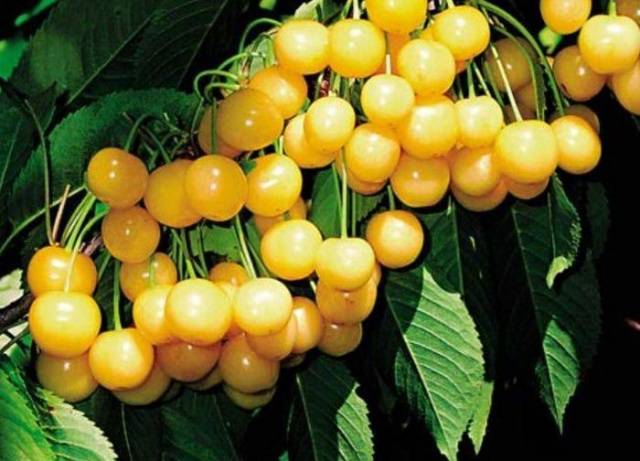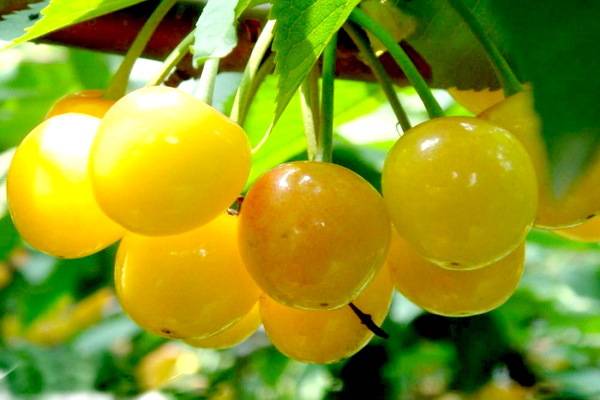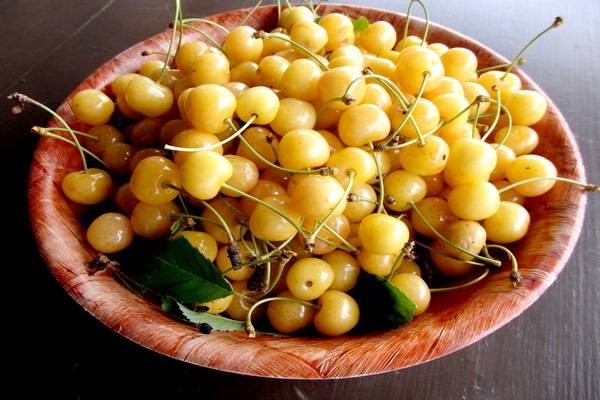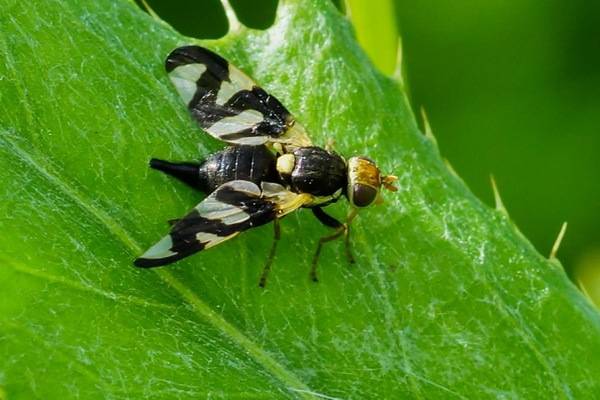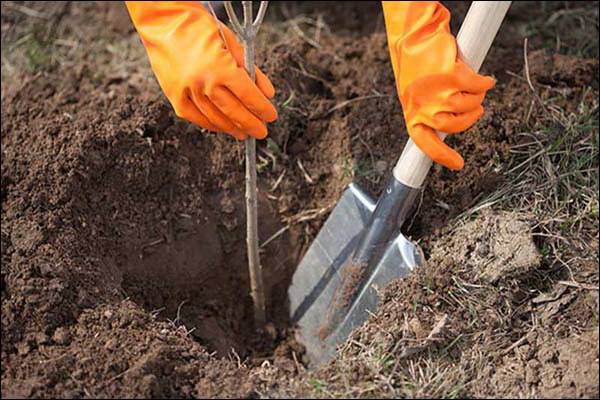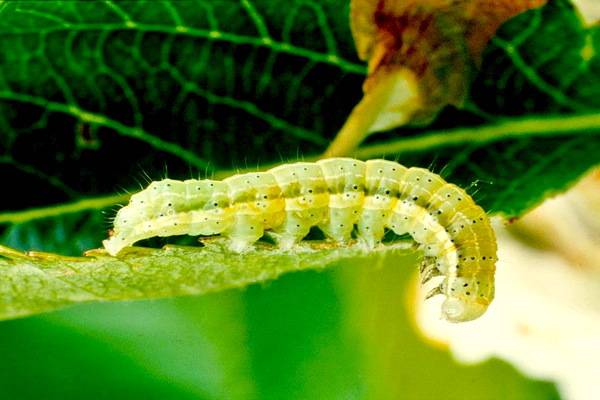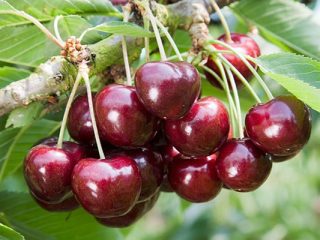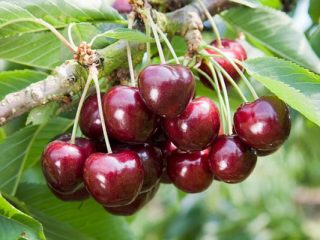Content
Cherries Amber belongs to the category of large-sized plants. The main feature of this variety is the bright color of the fruit, amber-yellow.
Breeding history
Sweet cherry Yantarnaya was created as a result of crossing plants of such varieties as Black Gaucher and Drogana yellow... It was brought out in 2001 by Ukrainian scientists at the N.N. Grishko. The Orlovskaya Yantarnaya variety is included in the state register, the originator is the All-Russian Research Institute of Breeding of Fruit Crops.
Sweet cherry Yantarnaya has established itself well as a high-yielding and winter-hardy variety.
Description of culture
The Amber Cherry plant has a dense and spreading crown of medium height. Its shoots are straight, with gray bark. The base of the branches is colored anthocyanin. The leaves are oval and deep green in color. Their length does not exceed 45 mm. White flowers usually contain 5 petals.
The variety requires pollination. Bouquet branches of the plant are fruitful. Cherry berries are medium-sized, heart-shaped, weighing no more than 5 g, fruits are yellow or pinkish-yellow in color.
A small stone (about 5%) is well separated from the total mass. The juice is colorless, the pulp of the berry is sweet in taste. Cherries of this variety appear early: in late June - early July.
The percentage of nutrients in cherries of this variety:
- sucrose - 10.3%;
- acids - 0.4%;
- dry matter - 13.9%.
Due to its resistance to frost and disease, Amber can grow both in southern regions and in mid-latitudes.
Characteristics
The amber variety tolerates abundant rains and drought well, while the fruits do not crack. Due to the original color of the berries, cherries are protected from attack by birds, which leads to the preservation of the fruits on the plant.
Drought resistance, winter hardiness
The variety is characterized by such important qualities as resistance to frost and prolonged absence of watering. Due to the frost resistance of the Amber Cherry, the variety will not die and will bear fruit stably even after frosts down to -30 ° C.
Watering Amber is recommended once a month. After the dry season, the plant should be restored, so watering is increased up to 1 time per week. Both standing in a container and running water are suitable.
The video will tell you about other features of yellow cherries:
Pollination, flowering period and ripening times
The Yantarnaya variety cannot be pollinated on its own. Together with him, other plants are planted that will perform this function.
The following varieties are suitable as pollinators for sweet cherries:
- Knight;
- Iput;
- North;
- Ovstuzhenka.
Cherry ovaries appear after pollination and form within a month. They come with a pointed end and are shaped like a heart.
Ripening of fruits on the plant occurs quickly enough, the berries of this variety are located in bouquets on "legs" and are well separated.
Productivity, fruiting
According to the description of the Oryol Amber Cherry in different sources, it does not begin to bear fruit immediately. The plant takes about 4 years to mature. During the yield period, the variety usually yields 35 t / ha per year. This is considered to be the average for commercial use. In private gardens, this amount of fruit is more than enough.
To get a rich annual harvest from cherries, you need to follow the rules of care.
Scope of berries
Yantarnaya berries are mainly eaten unprocessed, enriching the body with vitamins and minerals. Sweet cherries are useful for maintaining health:
- serves as the prevention of various diseases;
- improves blood composition;
- normalizes digestion.
You can also cook compotes from cherry fruits, make preparations for the winter: preserves, jams, jellies, confitures - and add fresh or frozen berries to baked goods.
Thanks to its beneficial properties, sweet cherries have found application in cosmetology. Masks from the juice and pulp of Amber berries slow down aging, improve the quality of the skin.
Disease and pest resistance
Sweet cherry orlovskaya amber is resistant to rust and coccomycosis. However, some diseases can damage the crown and lead the variety to complete death.
The plant can be infected with cylindrosporiasis. The disease is of fungal origin. Infection occurs with the help of the wind. All aerial parts of this cherry variety are affected. The disease manifests itself as spots on the leaves, in the place of which holes are subsequently formed.
The most common insect that interferes with the growth of Amber is the cherry fly.
So that she does not postpone her larvae, for preventive purposes, spraying of sweet cherries Amber is done according to a certain scheme twice:
- When the air warms up to 18 ºC and flies just appear.
- after 10-15 days.
Other pests of sweet cherries:
- weevils;
- butterflies;
- aphid;
- sawflies.
They slow down growth, damage the bark and shoots.
Advantages and disadvantages
The plant has many benefits. The attractive characteristics of the Amber cherry variety include:
- frost resistance;
- regular fruiting;
- immunity to coccomycosis;
- resistance to fruit cracking;
- plant protection from sparrows and tits;
- exclusion of infection with gray mold;
- unpretentious care;
- early maturation.
However, the sweet cherry variety Orlovskaya Yantarnaya also has weaknesses.
Cons of this type:
- requires pollination by neighboring plants;
- the value of the yield is within the average;
- not suitable for areas with harsh winters.
Landing features
In order for the plant to take root well, before planting, it is necessary to familiarize yourself with some of the rules for growing sweet cherries of the Yantarnaya variety.
Recommended timing
Plant depending on climatic conditions yellow cherries Amber is needed at different times.
There are no cold winters in the south, but the summers are very hot, and by planting a seedling in such conditions in the spring, you can ruin it. And vice versa, amber cherry planted in the spring period in the middle lane will be able to get stronger by frost.
Choosing the right place
The place for Yantarnaya must be in a spacious sunny area. The soil should be loose, rich in trace elements and minerals. The presence of a reservoir is not recommended.
Leave 5 m between the trees.
What crops can and cannot be planted nearby
Due to the presence of the same diseases with cherry Amber, it is not recommended to plant together:
- apricot;
- peach;
- pear;
- apple tree.
Also, it is impossible to place berries such as currants under the crown of plants of this variety. They will certainly perish.
Selection and preparation of planting material
The soil for planting amber cherries is prepared in advance.
- Mix 2 buckets of soil: 1 kg of wood ash and superphosphate.
- Add 3 buckets of humus, ammonium sulfate and potash fertilizers.
Landing algorithm
- They dig up the soil. For Amber Cherry, loose soil is important.
- Dig a hole at least 90 cm deep and 80 cm wide.
- The well is covered with a prepared healthy mixture.
- Fix the peg in the middle.
- A cherry sapling of Amber is added to the drop and tied to a support.
- They are covered with earth and watered abundantly.
Follow-up care of the culture
The variety does not require special care. You just need to follow some rules when growing amber cherries.
- A circle of at least 90 cm in diameter is formed around the tree.
- This surface must be free from weeds.
- The soil under Amber is well loosened.
- Cherries are usually watered once a month.
- In dry seasons, you can increase the amount of watering.
- Pruning is carried out in March, before the juice begins to move.
- First of all, Amber Cherry is removed from dry and damaged branches and only then the crown is formed.
- Places of cuts must be treated with garden varnish to protect against fungal infections.
- Young cherry seedlings need to be prepared for winter.
- Snow, peat and sawdust will serve as natural insulation for roots for plants of this variety.
- The rods are driven in in a circle and the covering material is stretched on them so that the Yantarnaya seedling is completely hidden in the cylinder. This method is also a protection against small rodents.
- Nitrogen fertilizers are added after two years. Organic cherry dressing can be done at the end of each summer season. You need to carefully inspect branches and leaves for changes. When they appear, treatment is started immediately.
Diseases and pests, methods of control and prevention
The compositions of chemical mixtures for the prevention and treatment of Yantarnaya are identical. The difference is in the frequency of spraying and the amount of mixture.
| Dangers for the Yantarnaya variety | Signs | Treatment and prevention |
| Cherry fly, butterflies and weevils | The presence of larvae on the leaves | Treatment in spring and autumn with urea solution. For 10 liters of water, take 700 g of the substance. |
| Cylindrosporiasis | Black-brown bark | Removal of affected branches. Covering the wounds. |
| Scab | Brown spots on the leaves | Spraying with copper oxychloride or 1% Brodsky liquid. |
| Clasterosporium disease | Leaves are brown, often with holes | Affected branches are destroyed, and healthy ones are sprayed with a 1% solution of copper sulfate. The wounds are covered with garden pitch. |
Conclusion
Sweet cherry Yantarnaya, due to its characteristics, is in demand among gardeners in different regions. The pleasant-tasting fruits of this variety have received a high tasting rating. The plant is a profitable option for growing in a garden. From a commercial point of view, it is also worth taking a closer look at this type.
